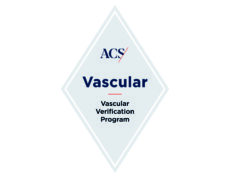 Data can be granular and clarifying. Conversely, data without appropriate context can lack nuance—like a paint-by-numbers portrait using only one crayon.
Data can be granular and clarifying. Conversely, data without appropriate context can lack nuance—like a paint-by-numbers portrait using only one crayon.
A recent article publivenshed by Becker’s Hospital Review, and promoted by the medical network Doximity, listed the top 10 hospitals with the lowest and highest rate of 30-day readmission based off data from the Centers for Medicare & Medicaid Services’ (CMS) Care Compare Website.1 Eight of the nine hospitals with the highest re-admission rate (I know it was supposed to be 10 but I didn’t write it; blame ChatGPT) are part of the U.S. Department of Veterans Affairs (VA) system.
This information has been in the press lately because facilities in the VA system are now being included in the CMS Overall Hospital Quality Star Ratings. The metric is based off five categories: mortality, safety of care, readmission, patient experience, and timely and effective care. Five stars is the maximum a facility can attain based on its aggregate score.
The dataset from CMS’ Care Compare website encompassed readmissions from July 1, 2018, through June 30, 2021. However, the data in the article were isolated to July 2020 and June 2021: a heterogenous time pre- and post-COVID-19 vaccine filled with quarantining people who refused to go to the hospital.
In the United Kingdom, deaths at home rose by almost a third in 2020 while in-hospital deaths fell, except those related to COVID-19.2
It is difficult to glean accurate data on readmissions during this time. Furthermore, readmission at VA facilities occur due to manifold reasons: including housing uncertainty, mental health and lack of resources.
The main offender listed in the Becker article was the VA Pittsburgh Healthcare System (VAPHS). What the article doesn’t mention is that since that time, the Pittsburgh VA has implemented the Surgical Safety Net as championed by the Interdisciplinary Medical Preoperative Assessment Consultation and Treatment Clinic Impact team.3 This is a multidisciplinary clinic comprised of Anesthesiology, Care Management and Social Work Services, Office of Primary Care, Physical Medicine and Rehabilitation, and Surgery.4
The team used a prediction model to identify high-risk veterans for readmission after surgery. Members then used a nurse-navigator preoperatively to counsel patients and their families on what to expect perioperatively, as well as calls on post-discharge days two, five, 14 and 30. The Department of Physical Medicine and Rehabilitation (PRM) worked with prehabilitation for the patient. A telehealth team taught the patient and the family to use virtual devices, and provided hotspots if the family had no internet access. There was now 24/7 access postoperatively for the veteran that he or she knew how to use.4
VAPHS dropped its readmission rate from 11.2 in October 2019 to 8.4 in October 2022. This program was selected as the winner for the VA’s 2022 Shark Tank competition. It is in trials at select sites across the country.
This article cherry-picks only readmissions from the list of components for the star system. Other factors, such as mortality and patient experience, have long been analyzed by the VA, especially in relationship to surgery. The American College of Surgeons’ National Surgical Quality Improvement Program for the VA has been used to improve risk-adjusted surgical outcomes.5
The VA has many metrics, such as SAIL (Strategic Analytics for Improvement and Learning Value Model), that it uses to grade its facilities. Started in 2012, SAIL uses 27 quality measures and two measures of overall efficiency and capacity to monitor such factors as acute-care mortality, access to care and employee satisfaction.6
While historically not receiving the best press, the “modern” VA has made great strides with patient outcomes and satisfaction scores.
Many recent articles have found that patients cared for by the VA have equal to—if not better—outcomes than those cared for in the civilian world.7
To that very point, Becker’s Hospital Review published an article on July 26 reporting that 67% of the VA facilities eligible received four or five stars in the latest batch of CMS data.8 What a difference 27 days make.
References
- https://www.beckershospitalreview.com/rankings-and-ratings/10-hospitalswith-highest-lowest-rate-of-unplannedreadmissions.html
- https://www.ons.gov.uk/peoplepopulationandcommunity/birthsdeathsandmarriages/deaths/articles/deathsathomeincreasedbyathirdin2020whiledeathsinhospitalsfellexceptforcovid19/2021-05-07
- https://news.va.gov/120638/castingsurgical-safety-net-reduce-readmissions/
- https://marketplace.va.gov/innovations/preventing-post-operative-readmissionswith-surgical-safety-net
- ha AK, Perlin JB, Kizer KW, Dudley RA. Effect of the transformation of the Veterans Affairs Health Care System on the quality of care. N Engl J Med. 2003; 348:2218–2227.
- https://www.gao.gov/assets/700/699359.pdf
- Blegen M, Ko J, Salzman G, et al. Comparing Quality of Surgical Care Between the US Department of Veterans Affairs and Non-Veterans Affairs Settings: A Systematic Review. Journal of the American College of Surgeons. 237 (2): p 352–61.
- https://www.beckershospitalreview.com/rankings-and-ratings/67-of-va-hospitals-receive-4-or-5-star-cms-ratings-for-patient-safety.html
AMIT CHAWLA is a member of the SVS Veterans Affairs Vascular Surgeons Committee. Chawla is chief of vascular surgery at Southeastern Louisiana Veterans Healthcare System in New Orleans.












